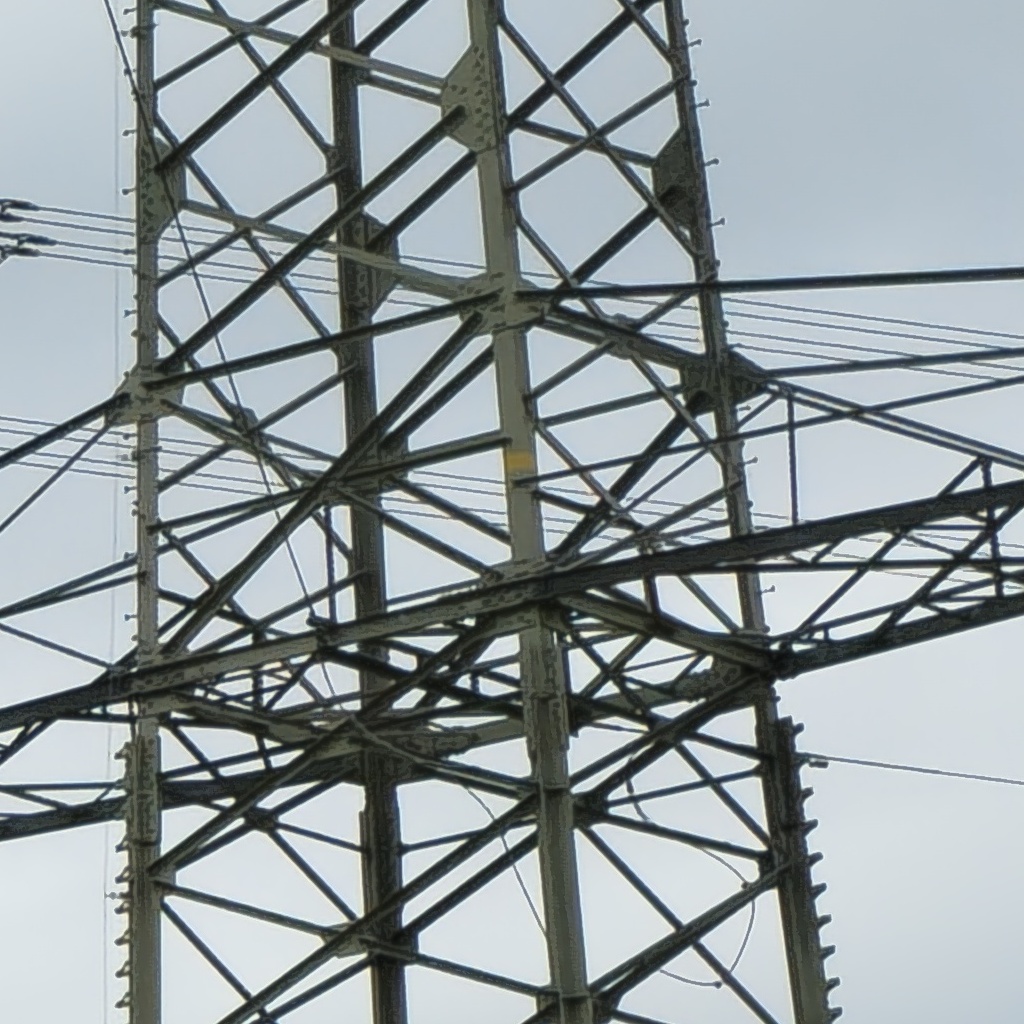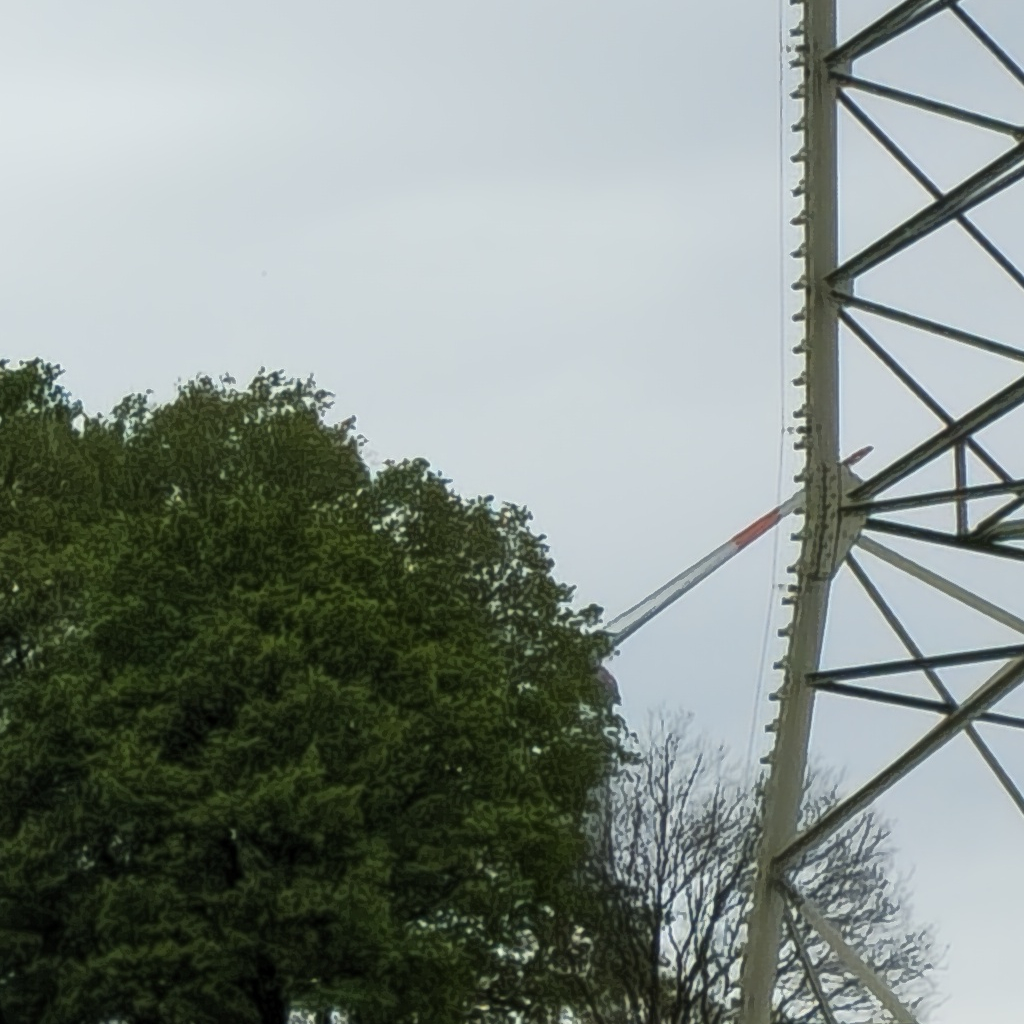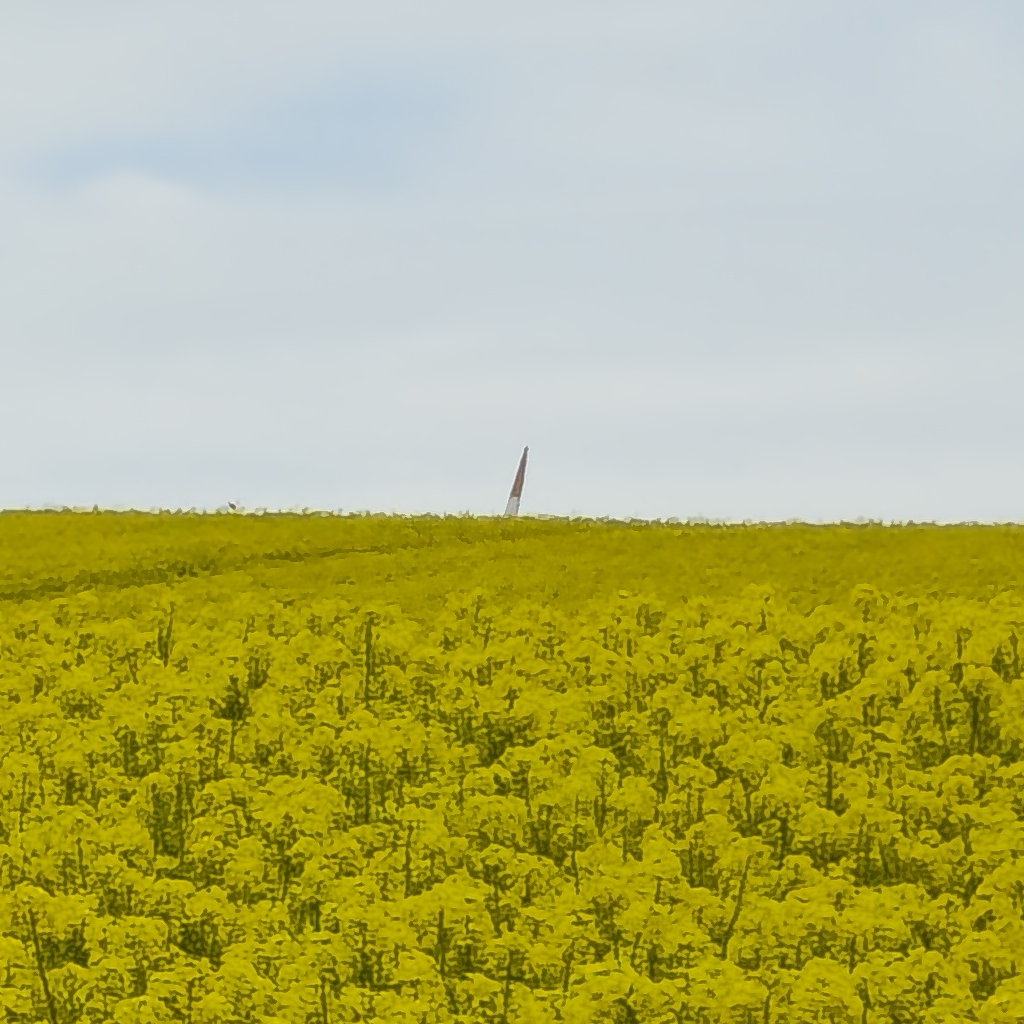Introducing the ISOCELL HP2 Sensor: Capturing the World in 200 Megapixels
Reflecting on 2023: The ISOCELL HP2 Sensor's Unprecedented Photography Power
As the year draws to a close, we marvel at the leaps taken in smartphone photography, culminating in the Samsung Galaxy S23 Ultra's ISOCELL HP2 sensor. This isn't just a step forward; it's a giant leap, bringing the kind of high-resolution photography once reserved for professional DSLRs into the palm of our hands.
Picture this: an image so detailed at 16,384 x 12,288 pixels that each pixel tells a story, a staggering 200 million narratives in a single frame. The ISOCELL HP2 isn't just about numbers; it's the epitome of innovation, transforming every shot into a masterpiece with clarity that has to be seen to be believed.
The HP2 sensor offers flexibility in how you capture the world. Users can choose between utilizing the full 200MP resolution for unparalleled detail or employing Tetra²pixel technology to simulate larger pixels, which is ideal for low-light conditions. In darker environments, the sensor can transform into a 12.5MP sensor with large 2.4μm pixels by merging 16 neighboring pixels, enhancing clarity and brightness. Alternatively, for vivid and sharp 8K videos, the sensor can switch to a 1.2μm 50MP mode to minimize cropping and capture more of the scene.
This versatility is due to pixel binning, a method where multiple small pixels combine to form a larger super pixel, improving low-light performance by capturing more light and reducing noise. While the HP2 sensor employs pixel binning for enhanced low-light performance, it can also utilize all 200 million pixels to capture images at full resolution. This allows for extremely detailed photography in well-lit conditions, harnessing the sensor's complete capabilities for capturing intricate details that might be missed at lower resolutions.
The HP2 goes beyond taking pictures; it captures experiences with unparalleled precision. Advanced features such as Tetra²pixel and Super QPD technology ensure that not a single detail is lost in low-light. The Dual Vertical Transfer Gate (D-VTG) elevates color fidelity and dynamic range, painting every image with the vibrancy it deserves.
In a significant leap from its predecessor, Samsung's ISOCELL HP2 sensor has transformed the autofocus feature. According to Samsung's official blog, the HP2 utilizes 'Super QPD technology for faster autofocus' where 'every pixel is utilized for phase detection', unlike the previous 108MP sensor that used only 3% of pixels. This enhancement allows the S23 Ultra to capture sharp images with remarkable clarity, even in fast-moving scenes.
Key features include:
- 200 Million Pixels: The sensor offers incredibly high resolution, allowing for detailed images even when zoomed in or cropped.
- Improved Low Light Photography: The sensor is equipped with technologies like Tetra²pixel and Super QPD, which improve photo quality in low-light conditions by utilizing all 200 million pixels as focusing agents. This leads to faster and more accurate auto-focusing, even in dim environments.
- Enhanced Color Reproduction and HDR: The Dual Vertical Transfer Gate (D-VTG) technology enhances color reproduction and reduces overexposure in bright lighting conditions. Additionally, the Dual Signal Gain (DSG) technology is used for the first time in 50MP mode to improve HDR photos.
- Video Capabilities: The sensor supports 8K video recording at 30 frames per second.
As we bid farewell to 2023, let's take a moment to celebrate the technological marvels that have reshaped our approach to smartphone photography.
A Personal Journey Through High-Resolution Imaging
Navigating the vast landscape of high-resolution photography can be as challenging as it is rewarding. Sharing a 50MB image, a typical file size for a photo captured with advanced 200MP sensors, presents its own set of challenges:
- Storage Considerations: These massive files require significant space, both on personal devices and cloud platforms.
- Bandwidth Needs: Sending and receiving such large images can test the limits of mobile data and home internet bandwidth.
- Time Investment: The upload and download process for files this large is not instantaneous and requires a moment of patience.
Yet, the pursuit of capturing a world in astonishing detail is worthwhile:
- Depth in Cropping: The resolution affords the luxury of cropping extensively without losing the integrity of the image.
- Unmatched Clarity: Every pixel offers a narrative, making these images ideal for professional photography and fine art applications.
- Zooming Excellence: The high pixel count ensures that digital zoom retains a clear and precise image.
- Enhanced OCR Capabilities: The incredible detail captured by the 200MP sensor significantly improves Optical Character Recognition (OCR) accuracy. This makes it easier to convert text within images into editable digital formats, especially beneficial for professionals and businesses that rely on converting printed materials into editable and searchable digital files.
Capturing the Essence of 200 Megapixels
As I explored the capabilities of the ISOCELL HP2 sensor, I aimed to capture an image that could convey the breadth of its resolution. The chosen scene is a rich canvas that contrasts the vivid hues of nature with the structured lines of human creation. The real essence, however, lies in capturing those intricate details that each have their own narrative, adding depth and richness to the overall scene.
In this photograph, the rapeseed field's vibrant yellow unfolds beneath a towering pylon, a symbol of technological progress. Here, the natural and man-made elements come together, each revealing its own smaller stories.

A yellow marker, perhaps insignificant at a glance, is revealed upon zooming in, illustrating the sensor's ability to preserve even the most minute aspects of a scene.
But the narrative doesn't end there. Far in the distance, the blade of a wind turbine peeks into the frame — a solitary yet sharp presence captured against the distant trees.

It's a subtle yet striking reminder of the ongoing dialogue between energy's past and future, visible only through the ISOCELL HP2's exceptional detail retention at great distances.
But there's more than meets the eye. With the power of 200 megapixels, a second blade comes into view—one that eludes the casual observer. It's a testament to the sensor's extraordinary capacity to reveal elements you wouldn't notice even upon a third glance.

This photograph captures the essence of discovery and the joy of noticing the unnoticed. The dual presence of the wind turbine blades in the scene serves as a powerful illustration of the sensor's ability to not just capture images, but to capture discoveries waiting to be made. Each blade, whether bold or barely perceptible, contributes to the story of innovation and sustainability.
This image, captured with the Galaxy S23 Ultra, invites you to explore beyond the obvious and uncover the hidden complexities that high-resolution photography unveils. Spanning from close-up details to expansive views, from tiny elements to grand scenes, every aspect of the image is portrayed with remarkable clarity that encourages a detailed examination.
You are invited to delve into the layers of this scene and experience the remarkable detail that 200 megapixels can preserve. See for yourself the clarity that bridges distances and brings the far within reach by viewing the original image I captured earlier this year.
Interestingly, the yellow marker is just one of three markers in the image – there are two more blue ones in plain sight. Can you find them?
The Beauty of Compression
The realm of high-resolution imaging opens up possibilities, not just for capturing images with stunning detail, but also for the post-processing and sharing of these visual treasures. With a 200MP image, the file size can be quite large, often upwards of 50MB, which poses its own set of challenges in terms of storage and sharing. However, image compression technology offers a solution, enabling us to maintain high-quality visuals in a more manageable file size.
Compression algorithms, particularly those utilized in JPEG formatting, work by reducing the file size without significantly degrading the image's visible quality. This is achieved through a combination of methods, such as discarding some of the image data that the human eye is less likely to notice and optimizing the storage of color information.
JPEG typically employs a combination of discrete cosine transform (DCT), quantization, Run-length encoding (RLE) and Huffman coding. DCT helps in separating the image into parts of differing importance. Quantization reduces the precision of the less important parts, and Huffman coding efficiently encodes the data. Together, these algorithms reduce file size while retaining perceptible image quality.
An educational video from Branch Education illustrates this process with a compelling example that demonstrates the JPEG compression algorithm in action. The video shows how advanced compression techniques can shrink a large file substantially while preserving the image's fine details that our eyes can appreciate. This process is particularly vital for sharing and storing the vast images produced by cutting-edge camera sensors.
Furthermore, such high-resolution images provide a canvas for detailed editing and the opportunity for AI algorithms to work with an abundance of data, potentially enhancing and upscaling images in ways that were previously not possible.
For those interested in the technicalities of how image compression works and its implications for both amateur and professional photography, the resources provided by Branch Education are an invaluable tool. They offer insights into modern technology and its applications in everyday life, including the art and science of making high-resolution photography more accessible.
Understanding Compression by Reversing It
In this section, we'll delve into the intricate process of reverse decompression used in JPEG compression. It's like unwinding the steps taken during compression to recover the original image. This process involves a series of precise operations that, when performed in reverse, meticulously recreate the image with minimal loss in quality. It's worth noting that the information presented here is based on the concepts explained in the Branch Education video, which provides valuable insights into the world of image compression and decompression. Let's break down the steps involved in understanding how this reversal takes place.
-
Reverse Run-Length Encoding (RLE): To begin the decompression process, we undo the Run-Length Encoding (RLE) used for compression. This means we restore the original pixel values from the compact representations, effectively expanding the data.
-
Huffman Decoding: After reversing RLE, we perform Huffman decoding. This step helps us decode the compressed data efficiently by mapping Huffman-encoded symbols back to pixel values.
-
Organizing into Blocks: We then arrange the decoded pixel values into 8x8 blocks, which is a fundamental unit in JPEG compression and decompression.
-
Quantization Inversion: In this step, we reverse the quantization process. This involves restoring the original precision of pixel values by multiplying them with values from the quantization table.
-
Base Image Multiplication and Summation: Once quantization is inverted, we multiply the resulting values by corresponding base images. These base images represent different frequency components. Adding these together reassembles the image's frequency information.
-
Upscaling and Color Conversion: To ensure the image retains its original dimensions and color information, we upscale the red and blue prominence images and convert luminance and chrominance values back to the red, green, and blue color space.
-
Final Image Reconstruction: The culmination of these steps results in a reconstructed image closely resembling the original, without noticeable loss in quality.
-
Swift Decompression: Impressively, modern devices can perform these complex calculations on millions of pixels rapidly, making the decompression process almost instantaneous. For instance, even for high-resolution images, each block undergoes these steps efficiently, showcasing the computing power of our devices.
This simplified explanation conveys the essential steps in the reverse decompression process of JPEG compression, emphasizing the speed and efficiency of modern technology.
The Next Step: High Efficiency Image File Format (HEIF)
For the sake of this post, the image was taken in the JPEG format. It's worth mentioning that the phone offers a newer and more modern format named High Efficiency Image File Format (HEIF). While HEIF offers superior compression efficiency and image quality, it introduces another layer of complexities when it comes to sharing these images on social media and other platforms.
Due to its innovative nature, HEIF may not be universally supported across all devices and platforms, potentially limiting seamless sharing and accessibility for a broader audience. Therefore, for the purpose of this post, we opted for the widely compatible JPEG format to ensure that the image could be easily viewed and appreciated by readers across various platforms and devices.
Author's Edit:
As I reflect on the journey of technological evolution, it's astounding to consider the leaps we've made. My first foray into the world of mobile photography began with a Motorola RAZR V3x — a sleek silver flip phone that was at the cutting edge with its 2.0-megapixel sensor. For those who may not remember, this phone, also known as the M702iG, made its debut in late August 2006 and was a marvel of its time.
Sharing this brings to light just how far we've come, from those early days to the stunning capabilities of today's smartphone sensors. It's a reminder that each pixel in the images we now capture stands on the shoulders of these technological giants from our past.
This article, my journey through the ISOCELL HP2 sensor, and the educational intent behind it are all part of my personal exploration into how technology continues to shape our world. Assisted by the OpenAI neural network, this endeavor remains true to my independent spirit and commitment to learning and sharing knowledge.
No company has sponsored or influenced this content; it's a product of my genuine interest in understanding and sharing how groundbreaking tech unfolds around us.
Nonetheless, the ideas, execution, and all creative elements of this article are my own, as is the responsibility for this blog and its associated costs.
To all who have journeyed through this article with me: A heartfelt thank you for your time and for joining me in marveling at the milestones we continue to achieve in the tech world.
Your engagement is the greatest encouragement for someone who loves to unearth and narrate the stories of technological advancement.
Ressources
For a deeper understanding of JPEG and image compression, you can explore the resources directly:
- Watch the video on YouTube - Branch Education - How are Images Compressed?.
- Visit Branch Education's explanation on how JPEG works.
- Experience the clarity and detail achievable in high-resolution photography by the image, "Fields of Power" on my DeviantArt profile.
- Learn about the advanced autofocus technology of the ISOCELL HP2 sensor on Samsung's Official Blog.
- For writing assistance and content generation for this article, ChatGPT by OpenAI was used as a tool to help organize and present ideas.
- Wikipedia Sources:
- Samsung Galaxy S23 Ultra
- ISOCELL
- High Efficiency Image File Format (HEIF)
- Digital single-lens reflex camera
- Image resolution
- Micrometre
- Pixel binning
- Multi-exposure HDR capture
- Optical character recognition
- JPEG
- Discrete cosine transform
- Quantization (image processing)
- Run-length encoding (RLE)
- Huffman coding
- Motorola RAZR V3x
Samsung Desktop Experience
If you're intrigued by the world of high-resolution imaging and want to explore efficient ways to manage and transfer such images, consider diving into the Samsung Desktop Experience post. It offers valuable insights, including the ability to take images directly from your computer, granting you smart control over your photography adventures.









